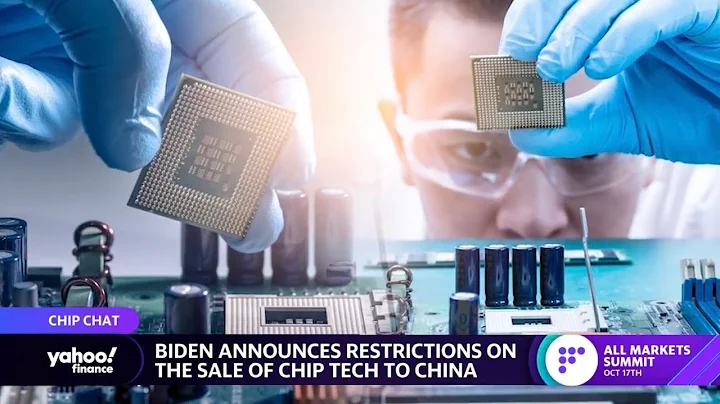"This article is original, plagiarism is prohibited, and violators will be prosecuted"
Today, the world is facing a tense situation of chip shortage. Due to the rapid growth of the electronics industry, it has brought about a chain reaction of a sharp increase in the demand for chips. The global chip market is in short supply. , TSMC, Samsung , Semiconductor Manufacturing International (SMIC) and other major international manufacturers have focused the attention of people inside and outside the industry.

What is the current strength of these major international wafer manufacturers?
To say which of these major chip foundries is stronger, TSMC can be said to be the winner. Now TSMC’s technology has been able to achieve mass production of the 3nm process, and is currently moving towards 2nm. The mass production of the process has begun, but Samsung is still struggling with the yield rate of the 4nm process.
Due to restrictions by the "chip rules" of the United States, my country's semiconductor industry has entered a period of stagnation for quite some time. Of course, SMIC's process has also been inevitably affected. SMIC has been able to produce 7nm chips using its self-developed FinFET N+1 and FinFET N+2 processes, and has now entered risk trial production.

In terms of mature processes, SMIC has achieved mass production of 14nm and 28nm processes, and its yield rate is comparable to the world's first-class levels.
Many people may think that the most advanced level in the world has already reached 3nm, and some places have begun to develop a new generation of 2nm process. In comparison, SMIC's 7nm has not yet entered mass production. Doesn't it seem that Somewhat "backward"?
But you must know that our country started late in the semiconductor field, and it is normal for it to lag behind the international first-class level. TSMC founder Zhang Zhongmou also said that the development of the chip industry depends on long-term accumulation and cannot be achieved by investing money. Looking at the United States as a technology giant, it is enough to prove that in order to revitalize the local semiconductor industry, it is attracting overseas chip manufacturers to build local fabs.

What's more, the suppression of my country's semiconductor industry by the United States is obvious to all. It prohibits members of the " Wassenaar Agreement " from providing any advanced technology or products to our country. Under such difficulties, China International was able to The breakthrough from the 28nm process to the 7nm process was completed within a short period of time. This is enough to prove SMIC’s strength.
However, as everyone knows, it is basically impossible to achieve mass production of the 7nm process without EUV lithography machines. However, our EUV lithography machines are stuck again. SMIC has no choice but to persist. A stable strategy is to develop mature technology first.

This is also the best choice that is in line with the current market situation. Now is the time when 28nm is in greatest shortage. SMIC has announced the expansion of 28nm production lines three times, with an estimated investment amount of 100 billion yuan. According to the Q1 revenue ranking of global wafer foundries released by Trend Force, SMIC ranks among the top five in terms of revenue.
2022 In the Q1 quarter, SMIC’s revenue reached US$1.842 billion (equivalent to approximately RMB 12.346 billion), a month-on-month increase of 16.6%. It can be said that SMIC has created a good situation for lifting the ban when the world is short of chips.

New news from TSMC, will it not leave a way for SMIC to survive?
However, there is new news recently from TSMC, which states that it will no longer expand the production capacity of 40nm and above processes. The production capacity of this part of the process will slowly be adjusted to the 28nm process, and the 28nm production capacity will increase by another 50%. In addition, TSMC also called on customers to migrate some of their mature designs to the 28nm process node.
Some people speculate that TSMC is not leaving SMIC a way to survive? After all, for TSMC, 28nm is the last generation of its pre-FinFET manufacturing process. Production is easy and simple, and the yield rate is also guaranteed. TSMC's move is to increase competition among wafer foundries.

In addition, with TSMC’s technical advantages and reputation, the market share of wafer fabs such as SMIC is likely to be further eroded by TSMC. Originally, they could not beat the high-end process. This time, even the mid-to-low-end market will be swallowed up. This is undoubtedly a huge blow to manufacturers such as SMIC.
In terms of processes above 40nm, TSMC’s revenue accounts for about 25%, while SMIC’s revenue in mature processes above 40nm accounts for as high as 81.4%. Once customers transfer orders, SMIC will lose a large part of its revenue. However, the more advanced 7nm process has not yet achieved mass production. For SMIC, the prospects are not good.
As for TSMC, no matter which process customers transfer their orders to, TSMC can satisfy it, leaving little share for other manufacturers.

Why TSMC calls for the transfer of production process
In fact, TSMC’s move is not aimed at SMIC. The process technology above 40nm is very mature, has a high yield rate, and has sufficient performance for PMIC power management units and IoT Internet of Things chips. This is why it still occupies a large share in the market.
But now the production capacity of the old nodes has reached a bottleneck, and the profits are not high. The foundries are not willing to stay on these old processes. Although the cost of 28nm is higher, the same wafer can make more chips and dilute it. The cost, after calculation, is actually not higher than the cost of 40nm.
Kevin Zhang, senior vice president of business development at TSMC, said: What really needs to be considered is the development direction of future products, not today's products. For customers, by moving to the next node, they can get better performance and better power, and overall they can get system-level benefits.
What do you think about TSMC’s call for node transfer? Please leave your views in the comment area.





















